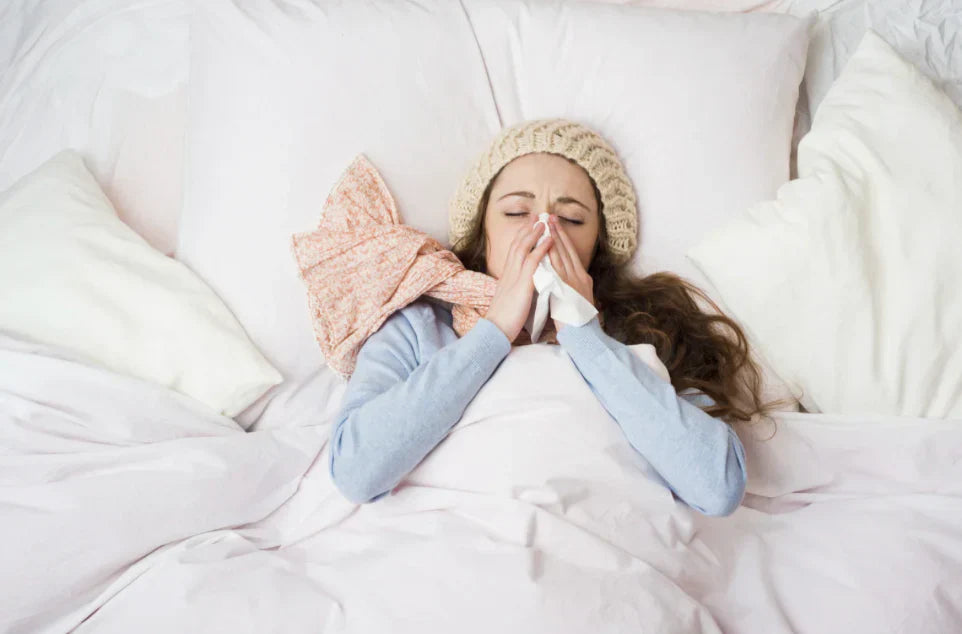
Could Your Pillow Be Affecting Your Health? Here's What to Consider
Share
We often focus on mattresses or room environment for a good night's sleep, but we might overlook a key element: the pillow. What if the source of your sleep troubles, allergies, or skin concerns is the very thing you rest your head on every night?
It may seem surprising, but an old or poorly maintained pillow can harbor allergens and irritants that impact your well-being. Here’s what you should know and how to address it.
1. Dust Mites: Unseen Disruptors
Even a clean-looking pillow can be a home to millions of dust mites. These microscopic organisms thrive in warm, humid settings and feed on dead skin cells. While harmless in themselves, their droppings are a common trigger for allergies and asthma, potentially causing sneezing, congestion, itchy eyes, and breathing difficulties.
-
What to do: Wash your pillowcases weekly in hot water. Using a hypoallergenic pillow protector can create a valuable barrier. It's also advisable to replace your pillow every 1 to 2 years to minimize their presence.
2. The Risk of Mold and Mildew
For those who sleep in a humid climate or tend to perspire at night, moisture can accumulate inside the pillow. This creates an ideal environment for mold and mildew to grow, which can lead to respiratory problems, sinus issues, and headaches.
-
What to do: A moisture-wicking pillow protector can help, as can ensuring your bedroom is well-ventilated. If you notice a persistent musty odor or visible discoloration on your pillow, it's time to replace it.
3. Bacterial Buildup
Over time, pillows absorb sweat, skin oils, and other bodily fluids. This accumulation can create a breeding ground for bacteria, which may contribute to acne, skin irritation, or other infections.
-
What to do: If your pillow is machine-washable, clean it every few months according to the care instructions. Frequently changing your pillowcase is essential, especially for those with sensitive skin. Some may find pillows with naturally antimicrobial properties beneficial.
4. Chemical Off-Gassing from Certain Materials
Some pillows, particularly those made with synthetic foams, can release volatile organic compounds (VOCs) from the manufacturing process. While the distinct "new" smell often dissipates, sensitive individuals might experience headaches or irritation.
-
What to do: If you are concerned about chemical exposure, look for pillows made with organic materials or those certified to be free from harmful substances. Letting a new pillow air out in a well-ventilated space for a few days before use can also help.
5. Poor Support and Physical Discomfort
While not an allergen, a pillow that doesn't support your neck and spine correctly can certainly make you feel unwell. The wrong pillow can lead to chronic neck pain, tension headaches, and poor sleep quality, which in turn affects your overall health and energy levels.
-
What to do: Select a pillow that matches your primary sleeping position. Side sleepers generally need a firmer, higher pillow to maintain alignment, while back and stomach sleepers usually benefit from a softer, lower-profile option.
When Is It Time for a New Pillow?
A good rule of thumb is to consider replacement every 1 to 2 years, but always be guided by the pillow's condition. If it has become lumpy, permanently flattened, misshapen, or holds odors even after washing, it has likely outlived its usefulness.
In Summary
Your pillow should be a cornerstone of rest, not a source of health concerns. Through regular cleaning, using protective covers, and replacing it when necessary, you can ensure your pillow contributes positively to both your sleep quality and your overall health. A fresher, cleaner pillow means a more restful night and a brighter morning.
